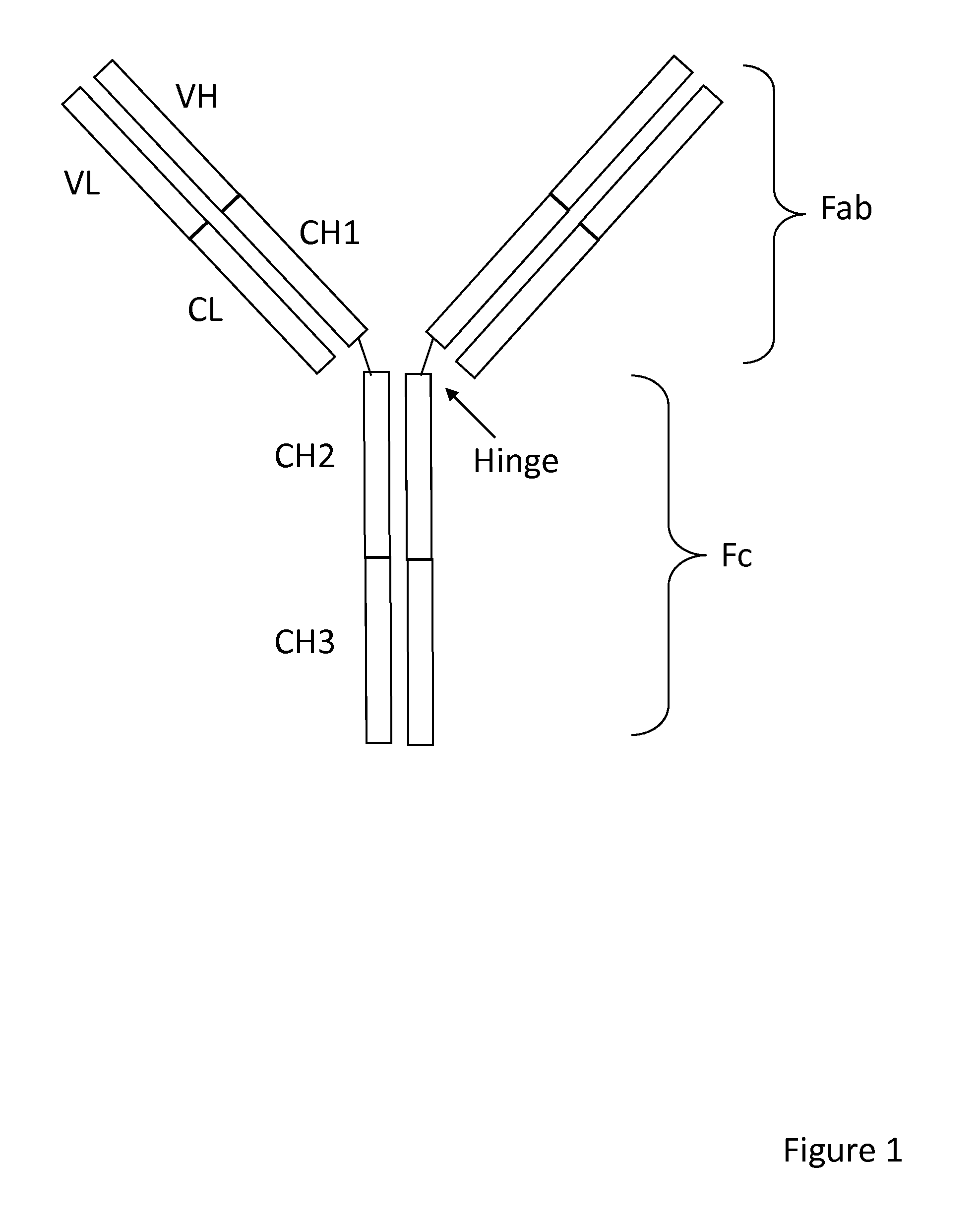Method of correlated mutational analysis to improve therapeutic antibodies
a mutational analysis and correlated technology, applied in the field of correlated mutational analysis to improve therapeutic antibodies, can solve the problems that none of them is guaranteed to work in all cases of antibodies against different targets, and achieve the effects of improving one or more characteristics of antigen binding proteins, improving expression, and increasing thermostability
- Summary
- Abstract
- Description
- Claims
- Application Information
AI Technical Summary
Benefits of technology
Problems solved by technology
Method used
Image
Examples
example 1
[0156]In this example, a poorly expressing antibody 1 with lower thermal stability is engineered to increase the expression level in transiently transfected cells along with improved thermal stability. FIG. 4a shows the alignment of antibody 1 sequence with human germline sequences. Only the top 5 closely related, as identified by the percentage of sequence identity to the antibody 1, human germline sequences are shown in this figure. Based on this, the possible subtype of the antibody 1 is determined In this case, the variable heavy chain of the antibody 1 sequence belongs to the VH3 subtype and the variable light chain belongs to the VK2 subtype. In the next step, the antibody 1 variable light and the variable heavy chain sequences were aligned against the VK2 and VH3 sequences found in the Kabat database (Wu and Kabat 1970), respectively. In order to the identify amino acids pairs that undergo correlated mutations in the multiple sequence alignments, the twenty amino acids were c...
example 2
[0160]Antibody 2 against another target is a poorly expressing molecule with lower thermal stability. In addition, high level of aggregation is noted when this IgG antibody is converted to scFv-Fc format. Correlated mutational analysis was carried out as in the case of Example 1. A total of 8 violations were identified in the framework region of the antibody 2 sequence (FIG. 8). The designed constructs of point mutants and combination of point mutants are listed in FIG. 9. It must be noted here that Y231F mutation was identified through antibody modeling and structural analysis. All other mutations were identified through correlated mutational analysis.
[0161]FIG. 10 shows the transient expression levels of the antibody 2 and its variants in scFv-Fc format. FIG. 10a shows the titer level as determined by protein A binding, 10b shows the purified yield (mg / L) and (c) shows the repeated expression tests at 10 ml scale. Except the variant involving Y231F mutation, which was determined t...
example 3
[0162]This is an example dealing with an antibody that expresses moderately well (30-50 mg / L in transient transfection in 293 cells). Correlated mutational analysis was carried out as in the above examples. A total of 6 violations were identified in this case. The transient expression levels of the parental and its variants which were designed based on the correlated mutational analysis are shown in the FIG. 14. Here again, the construct that had all the violations fixed showed highest improvement in the expression. FIG. 14b shows the inhibition analysis of the variants. The construct that had the maximum number of mutations showed about a 5-fold decrease in inhibition. This was most likely due to the two charge mutations that are located close to the CDR surface. Nevertheless, in this example too, the construct that had maximum number of mutations showed highest improvement in thermal stability (FIG. 15). More importantly, the variants were less sensitive to the pH variation of the...
PUM
| Property | Measurement | Unit |
|---|---|---|
| threshold | aaaaa | aaaaa |
| threshold | aaaaa | aaaaa |
| threshold | aaaaa | aaaaa |
Abstract
Description
Claims
Application Information
 Login to View More
Login to View More - R&D
- Intellectual Property
- Life Sciences
- Materials
- Tech Scout
- Unparalleled Data Quality
- Higher Quality Content
- 60% Fewer Hallucinations
Browse by: Latest US Patents, China's latest patents, Technical Efficacy Thesaurus, Application Domain, Technology Topic, Popular Technical Reports.
© 2025 PatSnap. All rights reserved.Legal|Privacy policy|Modern Slavery Act Transparency Statement|Sitemap|About US| Contact US: help@patsnap.com



